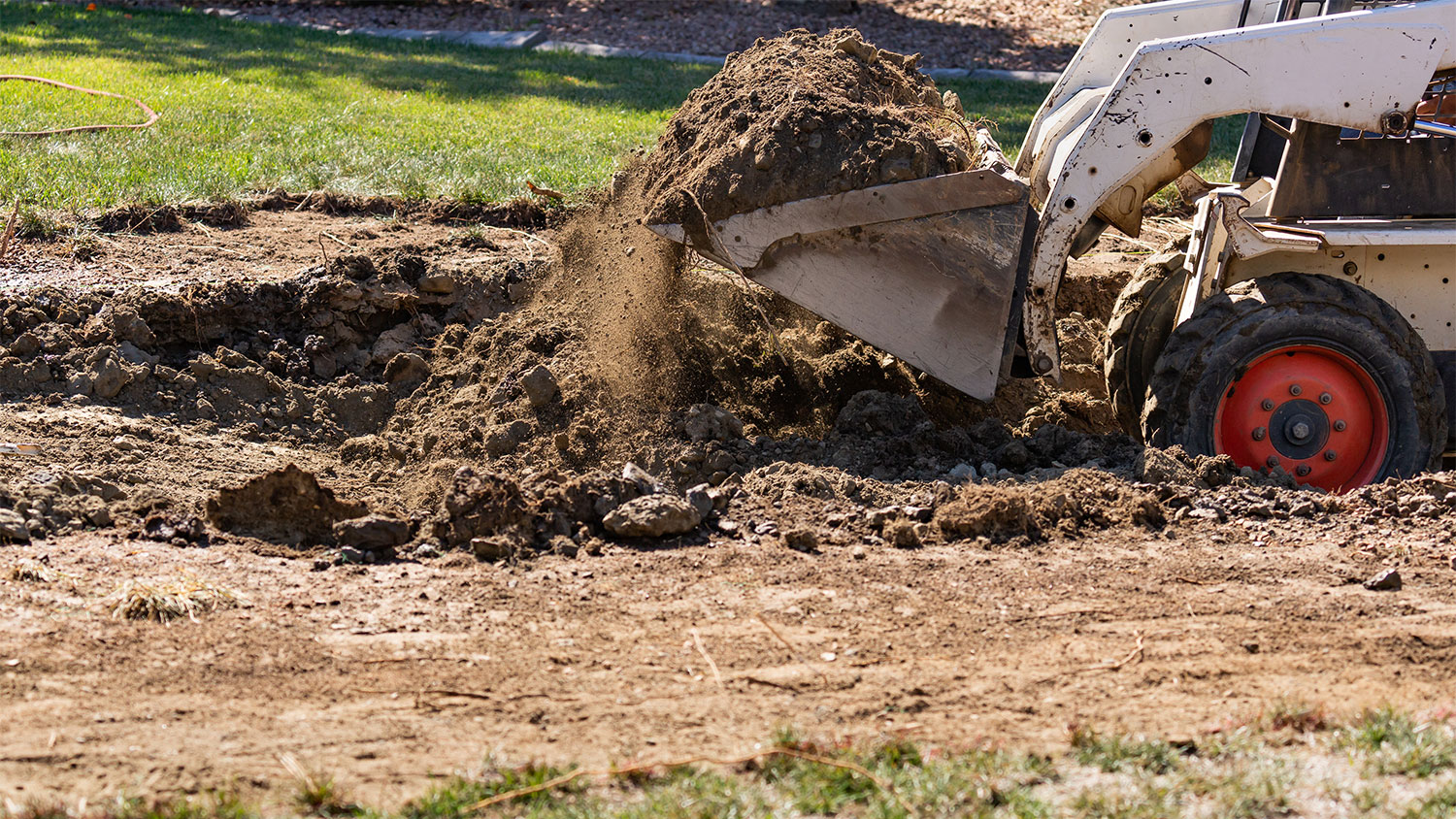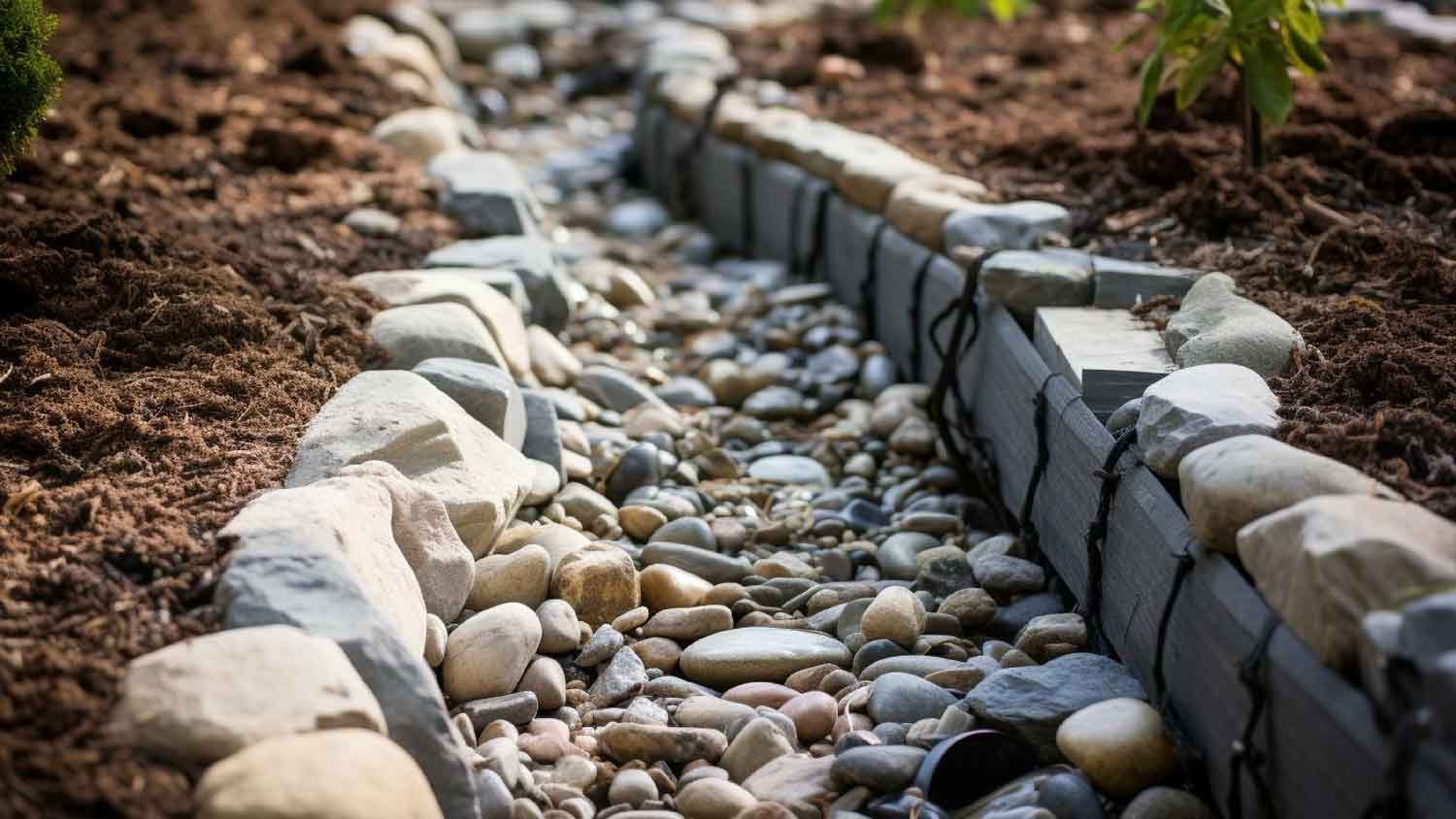
Discover how much trees cost to plant, exploring how factors like size, quantity, materials, and labor affect the total cost.
Xeriscaping costs an average of $17,000


Xeriscaping costs $17,000 or between $5,000 and $24,000, on average.
The average cost of xeriscaping per square foot ranges from $5 to $20.
Key xeriscaping cost factors include yard size, chosen style, plant selection, hardscaping, and materials.
Benefits of xeriscaping include water conservation, reduced maintenance, and increased property value.
Hiring a xeriscaping professional can ensure proper planning and installation for long-term sustainability.
This article was updated using automation technology and thoroughly reviewed for accuracy by HomeAdvisor Editor Ryan Noonan.
A xeriscape landscape costs an average of $17,000, with most homeowners spending between $5,000 and $24,000. Prices range from $5 to $20 per square foot, depending on factors like location, yard size, style, materials, and plant selection. Proper budgeting is essential, and hiring a professional can help you design and install a landscape that saves water and suits your needs over time
The cost of xeriscaping depends on a variety of factors. Note that you may not require each cost factor listed below. For example, you may not need mulching or irrigation lines, or perhaps your yard is already perfectly level and doesn't require grading. Your local xeriscaper can guide you on what works best for your yard. Here’s a closer look at the main xeriscaping cost factors.
On average, xeriscaping costs between $5 and $20 per square foot, including labor, plants, hardscape materials, and equipment. Most homeowners choose to xeriscape their entire yard, but you can also opt for just a portion. For instance, you might xeriscape the front yard while keeping a lawn in the backyard—a popular choice for pet owners.
| Yard Size (Sq. Ft.) | Cost Range (All-In) | Average Cost (All-In) |
|---|---|---|
| 500 | $2,500–$10,000 | $6,250 |
| 1,000 | $5,000–$20,000 | $12,500 |
| 1,250 | $6,250–$25,000 | $15,625 |
| 1,500 | $7,500–$30,000 | $18,500 |
| 2,000 | $10,000–$40,000 | $25,000 |
The style of xeriscape you choose significantly impacts the cost. While most styles range from $8,000 to $18,500, your total will depend on your yard size and design preferences. For instance, a classic xeriscape might require a higher budget due to extensive hardscaping, while a modern xeriscape could be more affordable. There are options available for various budgets.
| Style | Average Cost Range |
|---|---|
| Desert | $8,000–$18,500 |
| Classic | $10,000–$18,000 |
| Modern | $8,500–$15,000 |
| Cottage | $10,000–$15,000 |
Classic xeriscapes cost $10,000 to $18,000 on average and can reduce the size of any turf in your yard. This style often comes in at the higher end of the price range due to the number of square feet and hardscaping needed to achieve the look. Most of your materials, like mulch and gravel, go into hardscaping, with plants strategically planted in designated areas.
You can leave as little or as much grass as you want, with larger garden beds and smaller turfs costing you more than small garden beds and large turfs. Another option is to install artificial turf in your landscaping project. The cost of artificial turf is between $6 and $22 per square foot.
A desert xeriscape can also cost more than other styles, coming in around that average price of $8,000 to $18,500. As with the classic xeriscape, hardscape material is one of the main building blocks of achieving this look. Hardscaping includes driveways, decks, patios, and pathways. You can get away with using fewer plants spaced out between the rocky areas for a desert xeriscape.
Since desert plants are the main plants of choice for this xeriscape, you might not need a high-quality irrigation system to keep plants hydrated. Keep in mind, however, that a desert xeriscape may not do well in less arid areas.
Much like with patio xeriscaping, modern xeriscapes can cost less than other project styles, such as $8,500 to $15,000. This style is the most budget-friendly because you don’t need to cover a sizable square-foot area with gravel, plants, or concrete. Instead, you can simply leave most of your turf and hone in on focal points for adding xeriscape plants, concrete slabs, and smaller garden beds.
Cottage xeriscapes cost between $10,000 and $15,000 because they are more floral than the other options, so most of your expenses will go toward native plants that attract animals. You might place these plants side by side and use less hardscape material, opting to keep more turf than the other styles. Charming stone paths and mulch are excellent substitutes for gravel.
Planning or landscape design costs between $500 and $14,000. Hiring a xeriscaping specialist is essential. An experienced professional can create a well-thought-out design to ensure your landscape thrives. Without proper planning, issues like placing too many rocks in the wrong areas can increase your yard's temperature and lead to water runoff problems. Even for small projects, it's best not to skip this step to save money.
Grading a yard costs $1,000 to $3,300, though you might not need any. However, because of how xeriscaping works, you may want to add slopes to assist with irrigation and water conservation. How much you'll pay for regrading depends on the extent of the work and the type of soil you have.
Hardscaping costs anywhere from $300 to $1,100 for laying concrete slabs, stone, rock, boulders, and gravel. Like the cost of landscaping installation, hardscaping costs range from a few hundred dollars to many thousands, and how much you'll pay depends on the size of your yard and the look you want for your outdoor space.
Rocks and boulders create a more eco-friendly landscape, diverting water and, in the case of gravel and river rock, acting as a mulch. Decomposed granite costs $40 to $225 per cubic yard and is a popular option for hardscape mulch. Concrete comes in slab form for pathways and patios, creating walkways and limiting the areas that require planting.
Xeriscape plants range from $3 to $300 each, depending on the type, size, and age. Flowers cost between $3 and $20, shrubs from $25 to $50, and trees from $100 to $300. While succulents are popular in xeriscapes, there's a wide variety of drought-tolerant plants that add color and diversity to your landscape. Choosing smaller, younger plants not only saves money but also lets you enjoy watching them grow over time.
Popular xeriscape plants include:
Flowers: Creeping thyme, purple poppy mallow, Mexican cardinal flower
Shrubs: Sage varieties (Sonoma, Germander, Russian), Saskatoon berry, Harry Lauder's Walkingstick
Succulents: Yucca, crocodile aloe, sedum rubrotinctum
Other plants: Stinking hellebore, false shamrock, Lindheimer's bee blossom
Common low-water trees for xeriscaping include:
Northern or western catalpa
Golden rain tree
Common hackberry
Big-tooth maple
Russian hawthorn
Kentucky coffeetree
Tartarian maple
Drip irrigation costs between $1,800 and $2,500, depending on the size of the system and any extra plumbing. While you might consider relying only on rainfall, this approach puts your plants at risk during extended hot or dry periods. Installing a drip irrigation system for supplemental watering is a smart move.
Mulch costs $35 to $170 per cubic yard. Mulch conserves water and provides ground cover, preventing excessive evaporation from your soil.
You might consider tackling a xeriscaping project yourself, especially if it's small or simple. However, for more complex projects involving retaining walls, intricate irrigation systems, or specialized plant knowledge, it's wise to hire a xeriscaping pro.
A professional landscaper can recommend the best plants for your area, advise on suitable hardscape materials, and install an efficient drip irrigation system to maximize water conservation. Hiring a pro ensures your xeriscape is designed and installed correctly for long-term sustainability.
No place is more important than your home, which is why HomeAdvisor connects homeowners with local pros to transform their houses into homes they love. To help homeowners prepare for their next project, HomeAdvisor provides readers with accurate cost data and follows strict editorial guidelines. After a project is complete, we survey real customers about the costs to develop the pricing data you see, so you can make the best decisions for you and your home. We pair this data with research from reputable sources, including the U.S. Bureau of Labor Statistics, academic journals, market studies, and interviews with industry experts—all to ensure our prices reflect real-world projects.
From average costs to expert advice, get all the answers you need to get your job done.

Discover how much trees cost to plant, exploring how factors like size, quantity, materials, and labor affect the total cost.

Learn who to hire to regrade your yard. Compare grading contractors vs landscapers, see the process, timelines, and average costs to plan confidently.

Wondering who to hire to fill in an uneven lawn? See if a landscaper or general contractor fits your project and learn what to expect before you book.

Curious who to hire for mulching? Compare mulching companies, landscapers, and tree services, plus DIY vs. pro costs, to choose the right help today.

How much river rock will your next landscaping project need? Find out with our river rock calculator.

How much topsoil do you really need for your project? Dig into this topsoil calculator to find out.